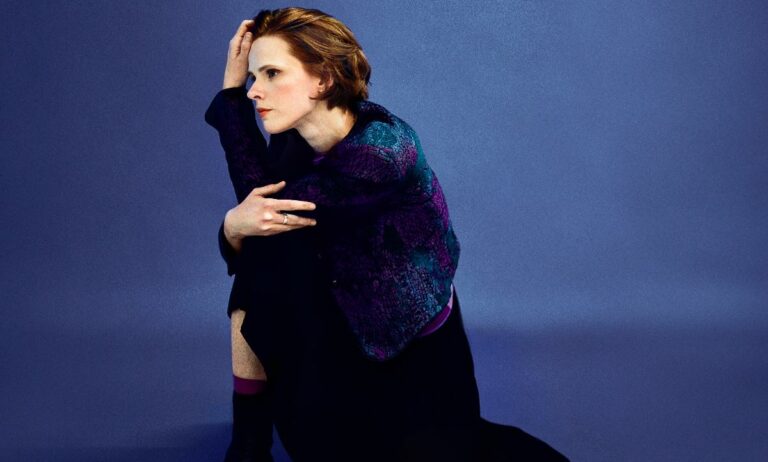Is Kratom Legal? Understanding the legality of kratom involves navigating through a complex landscape of regulations and varying perspectives. In this article, we delve into the nuanced aspects of kratom’s legality, addressing key questions and concerns. We begin by exploring what kratom is and its cultural and medicinal significance.
Moving forward, we examine its legal status across different jurisdictions, shedding light on federal regulations in the United States and abroad. Our discussion extends to practical matters such as driving under the influence and purchasing age restrictions. Furthermore, we explore the nuances of traveling with kratom and its benefits, including enhanced energy, pain relief, and mood improvement.
Finally, we investigate why kratom faces bans in certain regions despite its potential therapeutic uses. Join us as we unravel the complexities surrounding “is kratom legal,” offering clarity and insights into this controversial botanical.
What Is Kratom?
Kratom, scientifically known as Mitragyna speciosa, is a tropical tree native to Southeast Asia. It belongs to the coffee family and has been used traditionally for centuries due to its medicinal properties. The leaves of the kratom tree contain compounds that can have psychotropic (mind-altering) effects. These leaves can provide stimulating or sedative effects when ingested, depending on the dosage.
Kratom has a rich history in Southeast Asian countries like Thailand, Indonesia, Malaysia, and Papua New Guinea. Indigenous populations have used it for centuries as an herbal remedy for various ailments and as a recreational substance, including the popular Trainwreck Kratom strain.
Traditionally, kratom leaves were chewed fresh or dried and brewed into tea. In smaller doses, kratom acts as a stimulant, increasing energy, sociability, and alertness. In larger doses, it has sedative effects, helping to relieve pain and aid with relaxation.
The primary active compounds in kratom are alkaloids, particularly mitragynine, and 7-hydroxymitragynine. These alkaloids interact with the brain’s opioid receptors, which can produce effects similar to both stimulants and sedatives.
Is Kratom Legal Everywhere?
Kratom’s legal status is complex and varies widely across the globe. In some countries, kratom is completely legal, while in others, it is regulated or banned outright. This disparity is largely due to differing perspectives on kratom’s safety and potential for abuse.
In the United States, kratom is legal at the federal level but is subject to state and local regulations. Some states, like Alabama, Arkansas, Indiana, Rhode Island, Vermont, and Wisconsin, have banned kratom entirely. Other states have adopted the Kratom Consumer Protection Act, which regulates the sale and distribution of kratom to ensure product safety and purity.
Internationally, kratom’s legality varies even more. In Southeast Asia, where kratom originates, its legal status is mixed. Thailand, historically one of the primary sources of kratom, legalized the plant for medical use in 2018 after decades of prohibition. However, in countries like Malaysia and Myanmar, kratom remains illegal. In Europe, kratom is banned in countries such as Denmark, Poland, and the United Kingdom, while it remains legal in others, though often with restrictions.
These legal variations reflect ongoing debates about kratom’s benefits and risks. Consumers must stay informed about their local regulations to avoid legal issues and ensure responsible use.
Understanding the Federal Regulation
Kratom, a botanical supplement derived from the leaves of the Mitragyna speciosa tree, has garnered significant attention in recent years due to its potential therapeutic benefits and associated risks. In the United States, the federal regulation of kratom is a topic of ongoing debate and complexity.
At the federal level, kratom is not classified as a controlled substance. This means it is legal to possess, sell, and use kratom across the United States, provided it does not violate any state or local laws. The Food and Drug Administration (FDA), however, has expressed concerns about the safety and efficacy of kratom.
The agency has not approved kratom for any medical use. It has issued several warnings about its potential health risks, including contamination with harmful substances such as heavy metals and bacteria like Salmonella.
Is Kratom Legal?
Is Kratom Legal? Understanding the legality of kratom involves navigating through a complex landscape of regulations and varying perspectives. In this article, we delve into the nuanced aspects of kratom’s legality, addressing key questions and concerns. We begin by exploring what kratom is and its cultural and medicinal significance. Moving forward, we examine its legal status across different jurisdictions, shedding light on federal regulations in the United States and abroad. Our discussion extends to practical matters such as driving under the influence and age restrictions for purchase.
Furthermore, we explore the nuances of traveling with kratom and its benefits, including enhanced energy, pain relief, and mood improvement. Finally, we investigate why kratom faces bans in certain regions despite its potential therapeutic uses. Join us as we unravel the complexities surrounding “Is kratom legal,” offering clarity and insights into this controversial botanical.
What Is Kratom?
Kratom, scientifically known as Mitragyna speciosa, is a tropical tree native to Southeast Asia. It belongs to the coffee family and has been used traditionally for centuries due to its medicinal properties. The leaves of the kratom tree contain compounds that can have psychotropic (mind-altering) effects. These leaves can provide stimulating or sedative effects when ingested, depending on the dosage.
Kratom has a rich history in Southeast Asian countries like Thailand, Indonesia, Malaysia, and Papua New Guinea. Indigenous populations have used it for centuries as an herbal remedy for various ailments and as a recreational substance.
Traditionally, kratom leaves were chewed fresh or dried and brewed into tea. In smaller doses, kratom acts as a stimulant, increasing energy, sociability, and alertness. In larger doses, it has sedative effects, helping relieve pain and aid relaxation.
The primary active compounds in kratom are alkaloids, particularly mitragynine, and 7-hydroxymitragynine. These alkaloids interact with the brain’s opioid receptors, which can produce effects similar to both stimulants and sedatives.
Is Kratom Legal Everywhere?
Kratom’s legal status is complex and varies widely across the globe. In some countries, kratom is completely legal, while in others, it is regulated or banned outright. This disparity is largely due to differing perspectives on kratom’s safety and potential for abuse.
In the United States, kratom is legal at the federal level but is subject to state and local regulations. Some states, like Alabama, Arkansas, Indiana, Rhode Island, Vermont, and Wisconsin, have banned kratom entirely. Other states have adopted the Kratom Consumer Protection Act, which regulates the sale and distribution of kratom to ensure product safety and purity.
Internationally, kratom’s legality varies even more. In Southeast Asia, where kratom originates, its legal status is mixed. Thailand, historically one of the primary sources of kratom, legalized the plant for medical use in 2018 after decades of prohibition. However, in countries like Malaysia and Myanmar, kratom remains illegal. In Europe, kratom is banned in countries such as Denmark, Poland, and the United Kingdom, while it remains legal in others, though often with restrictions.
These legal variations reflect ongoing debates about kratom’s benefits and risks. Consumers must stay informed about their local regulations to avoid legal issues and ensure responsible use.
Understanding the Federal Regulation
Kratom, a botanical supplement derived from the leaves of the Mitragyna speciosa tree, has garnered significant attention in recent years due to its potential therapeutic benefits and associated risks. In the United States, the federal regulation of kratom is a topic of ongoing debate and complexity.
At the federal level, kratom is not classified as a controlled substance. This means it is legal to possess, sell, and use kratom across the United States, provided it does not violate any state or local laws. The Food and Drug Administration (FDA), however, has expressed concerns about the safety and efficacy of kratom. The agency has not approved kratom for any medical use. It has issued several warnings about its potential health risks, including contamination with harmful substances such as heavy metals and bacteria like Salmonella.
The Drug Enforcement Administration (DEA) has also been involved in the regulatory discussion. In 2016, the DEA announced its intention to classify kratom’s primary alkaloids, mitragynine and 7-hydroxymitragynine, as Schedule I substances, which would place them in the same category as drugs like heroin and LSD.
This proposal was met with significant public and scientific opposition, leading the DEA to withdraw its notice and call for further research and public comment.
Despite the lack of federal regulation, some states and local jurisdictions have taken it upon themselves to regulate kratom. This has resulted in a patchwork of laws where kratom is legal in some places but banned or restricted in others.
States like Utah and Georgia have passed the Kratom Consumer Protection Act, which aims to regulate the production, sale, and labeling of kratom to ensure consumer safety.
The ongoing federal stance on kratom reflects a balance between acknowledging its potential benefits and addressing the concerns regarding its safety and potential for abuse. Advocates for kratom regulation argue that establishing federal standards would help protect consumers and ensure product quality, while opponents fear that overregulation could limit access to a substance that many people use for pain relief and other health issues.
As research continues and more data becomes available, the federal regulation of kratom may evolve, potentially leading to more standardized and comprehensive guidelines.
Can You Drive on Kratom?
Driving on kratom is a subject of significant concern due to the varying effects it can have on users. Kratom’s impact on an individual largely depends on the dosage and the strain used. At lower doses, kratom can act as a stimulant, enhancing alertness and energy levels, which might seem to suggest that driving could be safe. However, even in these cases, the possibility of side effects such as jitteriness, anxiety, or altered judgment can still pose risks.
At higher doses, kratom has sedative effects, leading to drowsiness, dizziness, and impaired motor coordination. These effects are particularly dangerous when operating a vehicle, as they can significantly impair a driver’s ability to react to road conditions and make quick decisions. The sedative properties of kratom can slow reaction times and reduce overall alertness, increasing the risk of accidents.
Moreover, kratom’s effects can vary widely from person to person. Factors such as individual tolerance, the specific strain of kratom, and whether it is taken on an empty stomach can all influence how kratom affects someone. This unpredictability adds another layer of risk to driving after consuming kratom.
Legally, there is no specific prohibition against driving on kratom in most places, but this does not equate to it being safe. If a person is involved in an accident or stopped by law enforcement and found to be impaired, they could face charges similar to those for driving under the influence of other substances.
How Old Do You Have To Be To Buy Kratom?
The legal age to purchase kratom varies depending on local and state regulations. In the United States, there is no federal law that specifies a minimum age for buying kratom. However, several states and local jurisdictions have implemented their own age restrictions to regulate the sale of this substance.
In states like Alabama, Arkansas, Indiana, Rhode Island, Vermont, and Wisconsin, kratom is banned entirely, meaning that it cannot be legally purchased by anyone, regardless of age. Other states have set age restrictions to prevent minors from accessing kratom. For example, Illinois has established a minimum age of 18 to purchase kratom, while New Hampshire has set the age limit at 21.
Some states have adopted the Kratom Consumer Protection Act (KCPA), which includes provisions for age restrictions. Under the KCPA, the sale of kratom is restricted to individuals who are 18 years or older. This act aims to regulate the production and distribution of kratom, ensuring that it is safe for consumers and preventing underage access.
Local regulations can also play a significant role. In some cities and counties, local ordinances may impose stricter age limits or additional requirements for the sale of kratom. Retailers are responsible for adhering to these regulations and often require proof of age before selling kratom products.
The age restrictions on kratom sales are primarily intended to protect younger individuals from potential health risks. Kratom’s effects can be potent and unpredictable, and there is a concern about its impact on the developing brains of minors. By enforcing age limits, regulators aim to mitigate these risks and ensure that consumers are making informed decisions about kratom use.
Can You travel with Kratom?
Traveling with kratom presents a unique set of challenges due to its varying legal status across different regions and countries. While it might be legal in your home state or country, it is crucial to research and understand the regulations of your destination and any places you will transit through to avoid legal issues.
Domestic Travel: In the United States, the legal status of kratom varies from state to state. If you are traveling domestically, it is essential to check the laws of your destination. Some states, such as Alabama, Arkansas, Indiana, Rhode Island, Vermont, and Wisconsin, have banned kratom entirely.
Traveling with kratom to these states could result in confiscation of the substance and potential legal consequences. In states where kratom is legal, you should still be mindful of local ordinances that may impose additional restrictions.
International Travel: Traveling internationally with kratom is even more complex. Many countries have strict regulations or outright bans on kratom. For example, countries like Malaysia, Myanmar, and Australia have classified kratom as an illegal substance, and possession can lead to severe penalties, including fines and imprisonment.
In Europe, kratom is banned in countries such as Denmark, Finland, and the United Kingdom. Always check the specific regulations of the country you are traveling to and ensure you comply with their laws.
What Are the Benefits of Kratom?
Kratom has gained popularity for its diverse range of effects and potential benefits. Users of kratom often report experiencing a variety of positive outcomes, including enhanced energy, mood improvement, pain relief, anxiety and stress reduction, improved focus and concentration, and sleep aid and insomnia relief. Here’s a closer look at each of these benefits:
Enhanced Energy
One of the primary reasons people turn to kratom is for its stimulating effects. In lower doses, kratom acts as a stimulant, similar to caffeine, boosting energy levels and combating fatigue. This makes it a popular choice among those who need a natural way to increase their energy and stay alert throughout the day. Individuals particularly favor it with demanding jobs or active lifestyles who need sustained energy without the jitteriness often associated with other stimulants.
Mood Improvement
Kratom has mood-enhancing properties that can help alleviate feelings of depression and anxiety. The alkaloids in kratom interact with the brain’s opioid receptors, promoting the release of feel-good hormones like serotonin and dopamine. This interaction can lead to improved mood, increased feelings of well-being, and reduced symptoms of depression. Many users find that kratom helps them maintain a positive outlook and enhances their overall emotional state.
Pain Relief
Kratom is renowned for its analgesic (pain-relieving) properties. The compounds mitragynine and 7-hydroxymitragynine in kratom bind to opioid receptors in the brain, providing relief from various types of pain, including chronic pain, arthritis, and fibromyalgia. Unlike traditional opioids, kratom is believed to offer pain relief with a lower risk of dependency and fewer side effects, making it an attractive option for those seeking natural pain management solutions.
Anxiety and Stress Reduction
Kratom’s calming effects are beneficial for those dealing with anxiety and stress. In moderate to higher doses, kratom can induce a state of relaxation and tranquility, helping to ease the symptoms of anxiety and reduce stress levels. Users often report feeling more at ease and less overwhelmed when using kratom, which can significantly improve their quality of life.
Improved Focus and Concentration
For individuals looking to enhance their cognitive abilities, kratom can be a valuable tool. In lower doses, kratom’s stimulating properties can improve focus, attention, and mental clarity. Students, professionals, and anyone needing to concentrate on tasks may find that kratom helps them stay alert and improves their productivity without the crash that comes from other stimulants.
Sleep Aid and Insomnia Relief
In higher doses, kratom can have sedative effects, making it a useful aid for those struggling with insomnia or other sleep disorders. The relaxing properties of kratom can help calm the mind and body, making it easier to fall asleep and stay asleep throughout the night. Users often report waking up feeling more refreshed and rejuvenated after using kratom as a sleep aid.
Why Is Kratom Banned In Some Places?
Kratom, despite its potential benefits, is banned in several places due to concerns over its safety, potential for abuse, and lack of regulation. The primary reasons for these bans can be understood through a few key points.
Health Risks and Side Effects
One of the main reasons kratom is banned in certain areas is due to its potential health risks and side effects. While many users report positive effects, others have experienced adverse reactions. These side effects can range from mild issues like nausea and dizziness to more severe problems such as liver toxicity, seizures, and respiratory depression. The risk of these side effects, particularly with high doses or prolonged use, has led some health authorities to take a cautious approach and ban the substance to protect public health.
Potential for Abuse and Addiction
Kratom’s interaction with opioid receptors in the brain can lead to a risk of dependency and abuse. Some users have reported developing tolerance and experiencing withdrawal symptoms similar to those associated with opioid addiction. This potential for abuse has raised concerns among policymakers and health professionals, leading to bans in places where there is a high focus on preventing substance abuse.
Lack of Regulation and Quality Control
In many regions, kratom products are not regulated, meaning there is no standard for purity, potency, or safety. This lack of regulation can lead to the sale of contaminated or adulterated products, posing significant health risks to consumers. Reports of kratom being contaminated with harmful substances like heavy metals, bacteria, and other drugs have further fueled the call for bans and stricter regulations.
Inconsistent Research and Public Health Concerns
The scientific research on kratom is still evolving, and while some studies highlight its potential benefits, others emphasize its risks. The inconsistent findings and ongoing debate within the scientific community contribute to the uncertainty surrounding kratom. Public health agencies, like the FDA and DEA in the United States, have expressed concerns and issued warnings about kratom, influencing local and state governments to implement bans as a precautionary measure.
Conclusion
Kratom is a complex and controversial substance with a range of potential benefits, including enhanced energy, mood improvement, and pain relief. However, its legal status varies widely, with some regions banning it due to concerns over health risks and potential abuse. Understanding federal regulations and local laws is crucial for users.
While kratom can offer therapeutic effects, it’s important to stay informed and use it responsibly. As research continues, the regulatory landscape may evolve, providing clearer guidelines. For those considering kratom, always prioritize safety and legal compliance.
Frequently Asked Questions
Can I find out if Kratom is legal in my area?
Yes, legality varies by region and can change frequently. It’s advisable to check local and state laws or consult legal resources to ensure compliance with current kratom regulations and avoid legal issues.
Can Kratom be purchased online legally?
Yes, in areas where it is legal. Many reputable vendors sell kratom online, adhering to local regulations and ensuring product safety through lab testing and quality control measures.
Are there age restrictions for purchasing Kratom?
Yes, age requirements vary by location. Some states impose minimum age limits, typically 18 or 21 years old, to legally purchase kratom products from retail stores or online vendors.
Is Kratom Legal in the United States?
At the federal level, kratom is legal. However, states have the authority to regulate kratom differently. It’s important to check local laws for specific legality in your area before purchasing or using kratom.
Is Kratom Safe to Use?
The safety of kratom depends on several factors, including dosage, individual health conditions, and interactions with other substances. Consulting with a healthcare professional before using kratom can provide personalized advice on its safety and potential risks.














